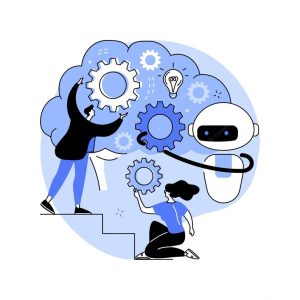Introduction Multiagent underpinning literacy( Shingle) is an area of exploration that focuses on developing independent agents able of learning from their terrain through trial- and- error. In this check, we explore the crucial generalities, algorithms, challenges, and operations in MARL, furnishing perceptivity into the advancements and implicit directions in this field. Overview of Multiagent underpinning
Introduction
Multiagent underpinning literacy( Shingle) is an area of exploration that focuses on developing independent agents able of learning from their terrain through trial- and- error. In this check, we explore the crucial generalities, algorithms, challenges, and operations in MARL, furnishing perceptivity into the advancements and implicit directions in this field.
Overview of Multiagent underpinning Learning Algorithms
MARL algorithms encompass a range of styles, including deep Q- learning infrastructures, distributed policy optimization, and game-theoretic approaches. These algorithms allow multiple agents to interact and learn collaboratively, making them suitable for colorful operations similar as robotics control, planning, and independent navigation.
Challenges of Multiagent underpinning Learning
Shingle presents several challenges, including designing surroundings that encourage collaboration between agents while remaining grueling to break. assessing agents in similar settings becomes complex due to the need to assess conception capabilities. Understanding imperative geste in complex surroundings is also a challenge, as is dealing with large quantities of data during training.

Image by: https://truegazette.com/
Types of surroundings Used in Multiagent underpinning Learning
Shingle can be applied in dynamic participated surroundings, insulated surroundings, andmulti-level surroundings. The choice of terrain impacts agent relations and learning strategies, making it essential to elect the most applicable setting for a given operation.
Information Salience in Multiagent underpinning Learning
Information salience refers to the ease with which agents can identify and reuse applicable information for effective decision- timber. Effective communication protocols, complex price structures, and stoner interface designs can enhance information salience in Shingle models, leading to bettered performance.
landing contending pretensions in Multiagent underpinning Learning
contending pretensions between agents can lead to conflicts and dropped overall performance in MARL. colorful approaches, similar as collaborative Q- literacy, evolutionary game proposition, and underpinning learning network infrastructures, have been proposed to address this challenge and promote collaborative geste .
consolidated Versus Decentralized Multiagent underpinning Learning
Centralized and decentralized approaches are two distinct strategies in MARL. Centralized approaches involve a central decision- making function, while decentralized approaches calculate on agents inferring conduct singly. Each approach has its advantages and limitations, and the choice depends on the specific operation and conditions.
Stochastic Versus Deterministic Multiagent underpinning Learning
Stochastic and deterministic Shingle differ in their action selection strategies. Stochastic Shingle utilizes probability distributions, while deterministic Shingle follows predefined rules. Stochastic Shingle can be more adaptive to changeable situations, while deterministic approaches may have advantages in scripts with clear rules.

Image by: https://truegazette.com/
prices and Penalty Structures in Multiagent underpinning Learning
Designing effective prices and penalty structures is pivotal for successful Shingle algorithms. Balancing prices to incentivize cooperation while avoiding inordinate penalties that discourage collaboration is essential for achieving optimal agent geste .
Exploration and Exploitation in Multiagent underpinning Learning
disquisition and exploitation relate to agents’ capacities to explore unknown areas and exploit being knowledge, independently. Balancing disquisition and exploitation is vital for agents to maximize their performance in dynamic surroundings.
Scalability and effectiveness of Multiagent underpinning Learning
Scalability and effectiveness are critical factors in MARL, especially when dealing with large- scale multiagent systems. Experimenters must address these challenges to insure that MARL algorithms can handle complex and real- world operations effectively.
operations of Multiagent underpinning Learning
Shingle has different operations across colorful diligence, including robotics, independent navigation, gaming, healthcare, retail, and finance. The technology enables the development of intelligent systems able of making informed opinions and perfecting overall performance in these disciplines.
Conclusion
Multiagent underpinning literacy holds great pledge for developing intelligent systems able of independent decision- timber and collaboration. As the field continues to advance, addressing challenges related to scalability, information salience, and landing contending pretensions will pave the way for further sophisticated and effective multiagent systems. By using the perceptivity gained from this comprehensive check, experimenters can further extend the capabilities of MARL algorithms, driving AI and robotics into the future and revolutionizing multiple diligence.























Leave a Comment
Your email address will not be published. Required fields are marked with *